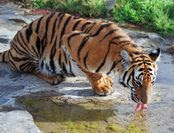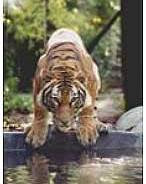Leadership and Personality in the Organisation
Millward
According to Bryman (1996) as cited in Millward notes, however, that most researchers would not argue with a definition of leadership as the process (act) of influencing the activities of an organized group in its efforts towards goal setting and goal achievement’ (Stogdill, 1950:3 as cited in Millward). The influence process is inextricably linked with groups and the group process. In the early stages of leadership research, the ability to lead was attributed to distinctive traits (so-called ‘great man’ theory). However, a comprehensive and landmark review by Stogdill (1948) as cited in Millward concluded that there was no evidence for this claim, and research took another turn. In particular, the focus shifted towards understanding how exactly leaders behave, and to linking different group processes with different styles of behaviour.
Leadership Style
There are many different models of leadership style, but common to all is the assumption that leadership behaviour can be described in two main ways: task-oriented and relationship-oriented. The task style is oriented to managing task accomplishment (where the leader defines clearly and closely what subordinates should be doing and how, and actively schedukes work for them), whilst the relationship style is oriented to managing the interpersonal relations to group members (by demonstrating concern about subordinates as people, responsiveness to subordinate needs and the promotion of team spirit and cohesion).
Other terms have been used to differentiate between these two distinc sets of orientation, including ‘initiating structure’ versus ‘consideration’ (Fleishman, 1953 as cited in Millward), ‘production-oriented’ versus people-oriented’ (Blake & Mouton, 1964 as cited in Millward., ‘production-centred’ versus ‘employee-centred (Likert,1967), ‘task emphasis’ versus relations emphasis’ (Fiedler, 1967 as cited in Millward) and ‘performance concern’ versus ‘maintenance concern’ (Misumi, 1985 as cited in Millward)
The ‘initiating structure/ consideration’ distinction has had a major impact on leadership theory and research since the 1950s. It forms the basis of many leadership measures, for instance the Supervisory Behaviour Description Questionnaire (Fleish, 1953 as cuted in Millward)- a vehicle for asking subordinates how they think should behave as a supervisor- and the Leader Behaviour Description Questionnaire (LBDQ); (Fleisman, 1953 as cited in Millward) probably the most frequently employed measure of leadership. (pg234)
Swedlik pg 395
Some highly specialized Q-sorts include the Leadership Q-Test (Cassel,1958 as cited in Swedlik et al) and the Tyler Vocational Classification System (Tyler, 1961 as cited in Swedlik et al)
Aamodt,2010
Pg 438
Personal Characteristics Associated with Leadership
In the last 100 years, many attempts have been made to identify the personal characteristics associated with leader emergence and leader performance.
Leader Emergence
Leader emergence is the idea that people who become leaders possess traits or characteristic different from people who do not become leaders. That is, people who become leaders, such as Barrack H. Obama and CEOs Carly Fiorina and Michael Dell, share traits that your neighbor or a food preparer at McDonald’s does not. If we use your school as an example, we would predict that the students in your student government would be different from students who do not participate in leadership activities. In fact, research indicates that to some extent, people are “born’ with a desire to lead or not lead, as somewhere between 17% (Ilies, Gerhardt,&Le, 2004 as cited in Aamodt) and 30% (Arvey, Rotundo, Johnson, Zhang,&McGue,2006 as cited in Aamodt) of leader emergence has a genetic basis (Ilies et al.,2004 as cited in Aamodt)
Does that mean that there is a “leadership gene” that influences leader emergence? Probably not. Instead we inherit certain traits and abilities that might influence our decision to seek leadership. Though early reviews of the literature suggested that the relationship between traits and leader emergence is not very strong, as shown in Table 12.1, more recenr reviews suggest that
1. People high in openness, conscientiousness, and extraversion, and low in neuroticism are more likely to emergence as leaders than their counterparts (Judge, Bono, Ilies & Gerhardtm2002 as cited in Aamodt 2010).
2. High self-monitors (people who adapt their behavior to the social situation) emerge as leaders more often than low self-monitors (Dayb & Schleicher, 2006; Day,Schleicher,Unckless, & Hiller, 2002 as cited in Aamodt 2010)
3. More intelligent people are more likely to emerge as leaders than are less intelligent people (Judge, Colbert, & Ilies, 2004 as cited in Aamodt 2010)
4. Looking at patterns of abilities and personality traits is more useful than looking at individual abilities and traits (Foti & Hauenstein, 2007 as cited in Aamodt 2010)
Table 12.1 Summary of Meta-Analysis od Leader Emergence and Performance…pg 440_Aamodt
It is especially perplexing that some of the early reviews concluded that specific trait are seldom related to leader emergence because both anecdotal evidence and research suggest that leadership behavior has some stability (Law,1996 as cited in Aamodt 2010) To illustrate this point, think of a friend you consider to be a leader. In allprobability, that person is ;eader in many situations. That is, he might influence a group of friends about what movie to see, make decision about what time everyone should meet for dinner, and “take charge” when playing sports
Conversely, you probably have a friend who has never assumed a leadership role in his life. Thus, it appears that some people consistently emerge as leaders in a variety of situations, whereas others never emerge as leaders.
Perhaps one explaianation for the lack of agreement on a list of traits consistently related to leader emergence is that the motivation to mlead is more complex than originally thought. In a study using a large international sample, Chan and Drasgow (2001) as cited in Aamodt found that the motivation to lead has three aspects (factors):
Affective identity, noncalculative, and social-normative. Peole with an affective identity motivation become leaders because they enjoy being in charge and leading others. Of the three leadership motivation factors, people scoring high on this one tend to have the most leadership experience and are rated by others as having high leadership potential. Those with a noncalculative motivation seek leadership position when they perceive that such positions will result in personal gain.
For example, becoming a leader may result in an increase in status or in pay. People with a social-normative motivation become leaders out of a sense of duty. For example, a member of the Kiwanis Club might agree to be the next president because it is “his turn”, or a faculty member might agree to chair a committee out of a sense of commitment to the university
Individuals with high leadership motivation tend to obtain leadership experience and have confidence in their leadership skills (Chan & Drasgow, 2001 as cited in Aamodt 2010). Therefor after researching the extent to which leadership is consistent across life, it makes sense that Bruce (1997) as cited in Aamodt (2010) concluded that the best way to select a chief executive officer (CEO) is ti look for leadership qualities (e.g., risk taking,innovation, vision) and success early in person’s career. As support for his proposition, Bruce cites the following examples:
1. Harry Gray, the former chair and CEO of United Technologies, demonstrated vision, risk taking, and innovation as early as the second job in his career.
2. Ray Tower, former president of FMC Corporation, went way beyond his job description as a salesperson in his first job to create a novel sales training program. Tower continued to push his idea despite upper management’s initial lack of interest.
3. Lee Iacocca, known for his heroics at Ford and Chrysler, pioneered the concept of new car financing. His idea of purchasing a 1956 Ford for monthly payments of $56 (“Buy a ’56 for $56”) moved his sales division from last in the country to first. What is most interesting abaout this success is that Iacocca didn’t even have the authority to implement his plan-but he did it anyway.
The role of gender in leader emergence is complex. Meta-analysis indicate that men and women emerge as leaders equally often in leaderless group discussions (Benjamin, 1996 as cited in aamodt 2010), men emerge as leaders more often in short-term groups and group carrying out tasks with low social interaction (Eagly & Karau, 1991 as cited in Aamodt 2010), andwomen emerge as leaders more often in groups involving high social interaction (Eagly & Karau, 1991 as cited in Aamodt 2010)….pg 441
Leader Performance
In contrast to leader emergence, which deals with the likelihood that a person will become a leader, leader performance involves the idea that leaders who perform well possess certain characteristics that poorly performing leaders do not. For example, an excellent leader might be intelligent, assertive, friendly and independent, whereas a poor leader might be shy, aloof, and calm. Research on the relationship between personal characteristics and leader performance has concentrated on three areas: traits, needs and orientation.
Traits
As shown in Table 12.1, a mete- analysis by Judge et al (2002) as cited in Aamodt 2010 found that extraversion, openness, agreeableness, and conscientiousness were positively related to leader performance. A meta-analysis by Youngjohn and Woehr (2001) as cited in Aamodt also found that management, decision making, and oral-communication skills were highly correlated with leadership effectiveness
As was the case with leader emergence, high self-monitors tend to be better leaders than do low self-monitors (Day & Schleicher, 2006; Day et al., 2002 as cited in Amodt 2010). The concept of self monitoring is especially interesting, as it focuses on what leaders do as opposed to what they are. For example, a high self-monitoring leader may possess the trait of shyness and not truly want to communicate with other people.
She knows, however, that talking to others is an important part of her job, so she says hello to her employees when she arrives at work, and at least once a day stops and talks with each employee. Thus, our leader has the trait of shyness but adapts her outward behavior to appear to be outgoing abd confident. To determine your level of self-monitoring, complete Section A in Exercise 12.2 in your workbook.
An intersesting extension of the trait theory of leader performance suggests that certain traits are necessary requirements for leadership excellence is a function of the right person being in the right place at the right time. The fact that one person with certain traits becomes an excellent leader while another with the same traits flounders may be no more than the result of timing and chance
For example, Lyndon Johnson and Martin Luther King, Jr were considered successful leaders because of their strong influence on improving civil rights. Other people prior to the 1990s had had same thoughts, ambitions, and skills as King and Johnson, yet they had not become successful civil rights leaders, perhaps because the time had not been right.
Cognitive Ability
A mete-analysis of 151 studies by Judge et al. (2004) as cited in Aamodt 2010 found a moderate but significant correlation (r=.17) between cognitive ability and leadership performance. The mete-analysis further discovered that cognitive ability is most important when the leader is not distracted by stressful situations and when the leader uses a more directive leadership style. In studies investigating the performance of united states Presidents, it was found that the presidents rates by historians as being the most successful were smart and open to experience, had high goals, and interestingly had the ability to bend the truth (Dingfelder, 2004; Rubenzer & Faschinbauer,2004) as cited in aamodt 2010 has expanded on the omportance of cognitive ability by theorizing that the key to effective leadership is the synthesis of three variables:wisdom, intelligence (academic and practical), and creativity. Pg 443
Needs
A personal characteristic that has received some support pertains to a leader’s need for power, need for achievement, and need for affiliation. In fact, as shown in Table 12.1, a mete- analysis by argus and Zajack (2008) as cited in Aamodt 2010 found a significant relationship between need for achievement and leader performance. Research by McClelland and Burnham (1976) as cited in Aamodt 2010 and McClelland and Botatzis (1982) also as cited in Aamodt 2010 demontrates that high-performance managers have a leadership motive pattern, which is high need for power and a low need for affiliation. The need is not for personal power but for organizational power.
This pattern of needs is thought to be omportant because it implies that aneffective leader should be concerned more with results than with being liked. Leader who need to be liked by their subordinates will have a tough time making decisions. A decision to make employees work overtime, for example, may be necessary for the organization’s survival, but it will probably be unpopular with employees. Leaders with high affiliation needs may decide that being liked is more important than being successful, causing conflict with their decision.
This theory would also explain why internal promotions often do not work. Consider, for example, a person who worked for six years as a loan officer. He and ten coworkers often went drinking together after work and went away on weekends.
One day he was promoted to manager, and he had to lead the same people with whom he had been friends. The friendships and his need to be liked hidered the new manager when giving orders and disciplining his employees. When he tried to separate himself from fhis friends, he was disciplining his employees. When he tried to separate himself from his froends, he was quickly thought of as being “too good” for them- a tough situation with no apparent solution, according to this theory.
This does not meand that a leader should not be friendly and care about subordinates. But successful leaders will not place their need to be liked above the goals of the organization. President Richard Nixon was thought to have a high need to be liked. He would often make a tough decision and then apologize for it because he wanted to be liked both the public and the press.
Needs for power, achievement, and affiliation can be measured through various psychology tests. The most commonly used is the Thematic Apperception Test (TAT) The TAT is a projective test in which a person is shown a series of pictures and asked to tell a story about what is happening in each. A trained psychologist then analyzes the stories, identifying the needs themes contained within them. Obviously, this technique is time-consuming and requires a great deal of training.
Another commonly used measure is the Job Choice Exercise (JCE), developed by Stahl and Harrell (1982) as cited in Aamodt 2010. with the JCE, the person reads descriptions of jobs that involve varying degrees of power, achievement, and affiliation needs and rates how desirable he finds each particular job. These rating are then subjectedto a complicated scoring procedure that uses regression analysis to reveal scoreson the tree needs categories. To find your own need-for-achievement, ned-for- power, and need-for- affiliation levels, complete Section D of Exercise 12.2 in your workbook. Pg 442
Another method to determine leaders’ needs is to examine the themes that occur in their writing and speeches. In one interesting use of this method, it was found that Presidents Franklin Roosevelt, Kennedy, and Reagan had high needs for power; Presidents Harding, Truman, and Nixon had high needs for affiliation; and Presidents Wilson, Hoover, and Carter had high needs for achievement (Winter,1988)
Gender
As with leader emergence, meta-analysis suggest that the role of gender in leader effectiveness is complex. When all studies are combined, men and women appear not to differ in leadership effictiveness (Eagly Karau, & Makhijani, 1995) as cited in aamodt 2010. However, men were more effective as leaders in situations traditionally defined in less masculine terms. Though men and women appear to be equally effective leaders, a meta-analysis of leadership style indicated that women were morelikely than men to engage in behaviors associated with high-quality leadership (Eagly, Johannesen-Schmidt, & van Engen, 2003)
Task Versus Person Oriented
Over the last 45 years, three major schools of thought- Ohio State Studies (Fleishman, Harris, & Burtt, 1955), Theory X (McGregor, 1960) and Managerial Grid (Blake & Mouton, 1984)- have postulated that differences in leaders performance can be attributed to differences in the extent to which leaders are task versus person oriented. As shown in Figure 12.1, though the three schools of thought use different terms, they say similar things.
Person oriented leaders such as country club leaders, Theory Y leaders, and leaders high in consideration act in warm and supportive manner and show concern for their subordinates. Person-oriented leaders believe that employees are intrinsically motivated, seek responsibility, are self-controlled, and do not necessary\ily dislike work. Because of these assumptions, person-oriented leaders consult their subordinates before making decisions, praise their work, ask about their families, do not look over their shoulder, and use a more “hands-off” approach to leadership. Under pressure, person-oriented leaders tend to become socially withdrawn (Bond,1995) as cited in Aamodt 2010.
Task-oriented leaders such as task-centered leaders, Theory X leaders, and leaders high in initiating structure define and structure their own roles and those of their subordinates to attain the group’s formal goals.
Task oriented leaders see their employees as lazy, extrinsically motivated, wanting security, undisciplined, and shirking responsibility. Because of these assumptions, task oriented leaders tend to manage or lead by giving directives, setting goals, and making decisions without consulting their subordinates. Under pressure, they become anxious, defensive, anddiminant (Bond,1995) as cited in Aamodt ,2010 , Interestingly, task-oriented leaders tend to produce humor (e.g., tell jokes and stories), whereas person-oriented leaders tend to appreciate humor (e.g., listen to others’ jokes) (Philbrick, 1989) as cited in aamodt. As shown in Figure 12.2, when using the terms from Figure 12.1, the best leaders (team) are both task and person oriented, whereas the worst (impoverished) are neither task nor person oriented. Some leaders (middle-of-the-road) have moderate amounts of both orientations.
A meta-analysis by Judge, Piccolo, and Ilies (2004) as cited in aamodt found that higher scores on consideration or on initiating structure were associated with such positive leadership criteria as follower satisfaction and group performance. The relationship between person orientation (consideration) and follower satisfaction, follower motivation, and ratings leadership effectiveness were higher than the relationships between task orientation (initiating structure) and these same three leaderships criteria.
A leader’s task or person orientation can be measured by several instruments two of which are the Leadership Opinion Questionnaire (LOQ) and the Leader Behavior Description Questionnaire (LBDQ). The LOQ is filled out by supervisors or leaders who want to know their own behavior style. The LBDQ is completed by subordinates to provide a picture of how they perceive their leader’s behavior. A meta-analysis by Eagly and Johnson (1990) as cited in Aamodt, 2010 indicated that in laboratory studies, women were more likely to have a person orientation and less likely to have a task orientation than were men. They did not find any such difference in studies that were conducted in actual organizations. They did, however, find small gender differences in that women were more likely to use a more participative approach and more likely to use a more approach.
As depicted in Figure 12.2 theoretically, person-oriented leaders should have satisfied employees, whereas task-oriented leaders should have productive employees. Leaders scoring high in both (called team leadership) should have satisfied and productive employees, whereas leaders scoring low in both (called impoverished leadership) should have unhappy and unproductive employees (Fleishman & Harris, 1962; Hucthison, Valentino, & Kirkner, 1998; Korman,1966; Pool, 1997) as cited in Aamodt ,2010
Although these predictions certainly make sense, the meta-analysis by Judge and his colleagues (2004) as cited in Aamodt, 2010 found that consideration scores (person orientation) were strongly correlated with follower satisfaction, follower motivation, and cratings of leadership effectiveness than were initiating structure scores (task orientation). Correlations with the performance of the work group were similar in magnitude for both consideration and initiating structure.
To complicate matters further, the relationship between person and task orientation is probably more complex than was first thought. Several studies have shown that leader experience and knowledge and such external variables as time pressures and work importance tend to moderate the relationship between person-orientation scores and satisfaction and between task-orientation scores and subordinate performance. To find your own level of task orientation, complete Section C of Exercise 12.2 in your workbook.
Unsuccessful Leaders
The traits and behaviors of unsuccessful leaders are not necessarily the opposite of those of successful leaders (Hackman & Wageman, 2007). In a departure from research to identify characteristics of successful leaders, Hogan (1989) as cited in Aamodt, 2010 attempted to identify traits of unsuccessful leaders. Hogan was interested in investigating poor leaders because, according to both emphirical research and anecdotal accounts, most employees report that one of the greatest sources of stress in their jobs is their supervisors’ poor performance, strange behavior, or both. This finding should come as no surprise: You can probably quickly recall many examples of poor performance or strange behavior with current of former supervisors.
Lack of Training
On the basis of years of research, Hogan (1989) as cited in Aamodt, 2010 conclude that poor leader behavior has three major causes. The first is a lack of leadership training given to supervisors. The armed forces are among the few organizations that require supervisors to complete leadership training before taking change of groupos of people. The norm for most organizations, however, is either to promote a current employee or hire a new employee and place him directly into leadership role. If training is ever provided, it is usually after the promotion andwell after supervisor has begun supervising. The serious consequences of this lack of training can best beunderstood if we imagine allowing doctors to perform surgery without training or truck drivers to drive on the highways without first learning how to drive.
Cognitive Deficiencies.
The second cause of poor leadership stems from cognitive deficiencies. Hogan (1989) as cited in Aamodt, 2010 believes that poor leaders are unable to learn from experience and are unable to think strategically-they consistently make the same mistakes and do not plan ahead. Support for this concept comes from themeta-analysis by Judge et al. (2004) as cited in Aamodt, 2010 which found a significant relationship betweencognitive ability and leader performance.
The manger of a local convenience store that I frequent is an example of a person who does not learn from his mistakes. The manager did not give employees their work schedules until one or two days before they had to work. The employees complained because the hours always changed and they could not schedule their personal, family, and social lives. But the manager continued to do it his way, and most of the employees quit. Eight years later, he still does it hisway, and his employees still leave at a high rate.
Personality
The third, and perhaps most important, source of poor leadership behavior involves the personality of the leader. Hogan (1989) as cited in Aamodt, 2010 believed that many unsuccessful leaders are insecure and adopt one of three personality types: the paranoid or passive-aggressive, the high-likability floater, and the narcissist.
The source of insecurity for leaders who are paranoid, passive-aggressive, or both both is some incident in their life in which they felt betrayed. This paranoid/ passive-aggressive leader has deeply rooted, but perhaps unconscious, resentment and anger. On the surface, these leaders are charming, quiet peole who often compliment their subordinates and fellow workers. But they rsent the success of others and are likely to act against subordinates in a passive-aggressive manner; that is, on the surface they appear to be supportive,but at the same time they will “stab’ another person in the back.
The type of leader who is insecure and seldom rocks the boat or causes trouble is known as a high-likability floater. This person goes along with the group, is friendly to everyone, and never challenges anyones’s ideas. Thus, he travels through life with many froends and no enemies. The reason he has no anemies is because he never does anything, challenges anyone, or stands up for the rights of his employees. Such eaders will be promoted and never fired because even though they make no great performance advances, they are well liked. Their employees have high morale but show relatively low performance.
Narcissists
Are leaders who overcome their insecurity by overconfidence. They like to be the center of attention, promote their own accomplishments, and take most, if not all, of the credit for the success of their groups-but they avoid all blame for failure.
Rather than concentrate on traits as did Hogan, Shen and her colleagues (2008) as cited in Aamodt, 2010 collected critical incidents of eneffective leader behavior and found that such behavior fell under ten basic dimensions:
1. Enggaging in illegal and unethical behavior
2. Avoiding conflict and people problems
3. Demonstrating poor emotional control (e.g., yelling and screaming)
4. Over-controlling (e.g., micromanaging)
5. Demonstrating poor task performance
6. Poor planning, organization, and communication
7. Starting or passing on rumors or sharingconfidential information
8. Procrastinating and not meeting time commitments
9. Failing to accommodate the personal needs of subordinates
10. Failing to nurture and manage talent
Pg 447
Doyle
Pg 23
Issues include the factors which influence the amount of effort expended at work, the influence of job satisfaction on levels of performance and organizational commitment, the processes thet underly group behaviour and decision making, and the exercise of power and influence in organizations. Also of interest is the nature of leadership and followership, and the management of organizational change.
Pg 69
So far we have largely been talking about top management. The focus on top management has also led to a renewed interest in the process of leadership both within senior teams and at every level within the organization (see, e.g., Schruijer, 1992; Sparrow, 1994 as cited in Doyle 2002). Shell for instance, encapsulates its vision as “Leaders leading Leaders” (Steel, 1997 as cited in Doyle 2002). Much is made of the ability to formulate and communicate vision. From ideas such as this, Bass and his colleagues proposed the concept of transformational leadership, in which the leader’s ability to inspire and empower followers and to create a belief in the attainability of the vision are stressed (Bass,1999;Bass & Avolio, 1990 as cited in Doyle 2002). Many culture change programmes begin with leadership development of senior managers, which then spreads more widely throughout the organization. Schruijer and Vansina (1999a, 1999b) as cited in Doyle 2002 edit and provide a commentary on a fascinating collection of papers that consider the role of leadership in organizational change. They raise a number of important and difficult questions concerning top-level leadership in organizations, including the extent to which one should focus on the individual qualities of the leader or on the incredibly complex set of relationships between leaders and followers. For instance, followers may exhibit dependence on, trust in, loyalty, and commitment to the leader but nevertheless aspire to an complete strongly for his or her job (Berg, 1998 as cited in Doyle 2002). Schruijer and Vansina conclude that one thing characterizing successful leaders in today’s turbulent business environment is their capacity to collaborate with diverse groups and stakeholders to achieve strategic objectives. The dynamics of this kind of shared leadership are illuminated by the work of De Vries, Roe, and Tailieu (1999) as cited in Doyle 2002 and Rijaman (1999) as cited in Doyle 2002, who both emphasize a “follower-centred” approach. Alimo-Metcalfe and Alban-Matcalfe (2000) as cited in Doyle 2002 are also considering the influence of “nearby” leaders rather than top management and conceptualizing the former as “servants” to their followers. However, as Bass (1999) as cited in doyle 2002 and others have stressed, transformational leadership is needed as well as more mundane management that organizes and coordinates work and provides the structure for implementing the fine detail of change.
Pg 71
Neil Anderson 2001
J.D Drenth,1998 Handbook of Work and Organizational Psychology second edition Vol 4: Organizational Psychology
Edited by Pieter J.D Drenth
Vrije Universiteit,
Amsterdam
The Netherlands
Henk Theirry
Tilburg University
The Netherlands
Charles J. de Wolff
Catholic University
Nijmegen,
The Netherlands
Psychology Press, amember of Taylor & francis group, psychology Press Ltd, 27 Church Road Hove East Sussex, BN3FA, UK
ISBN 0-86377-526-8 (Hbk)
The insight that the exercise of leadership is a part of organizational processes and that the nature and the effects of leadership are therefore strongly dependant on that context, is relatively new. Until quite recently, theories confined themselves to the leader’s personality and characteristics.
Pg 326
Leadership traits
The theory of leadership traits is founded on the assumption that leaders posses certain personal qualities, such as courage, intelligence, strength of character, vision, or charisma, which their followers do not posses. Despite its persistence in the public mind, this approach has enjoyed waningscientific interest since the 1950s, particularly because it has proved impossible to find a single set of characteristics that enables a clear and reliable distinction to be drawn between good and bad leaders or, for that matter, between leaders and followers. This was found to be the case both in large organizations (Stogdill, 1948, 1974) as cited in Drenth et al,1998 and in smaller groups (Mann,1959) as cited in Drenth, 1998.
Nevertheless, time and again this type of research has been given a new lease of life. Bass (1981) as cited in Drenth, 1998 has discussed hundreds of leadership-traits studies. He, too, concludes that leadership as such is not a property of an individual’s personality, but there are nonetheless certain fixed personal characteristics that seem to play a part in the exercise of leadership. Recent studies which made use of so-called “meta-analysis” have also had positive findings on the contribution made by personal characteristics to observable variation in leadership performance (Kenny & Zaccaro, 1983; Lord, De Vader, & Alliger, 1986). House (1977) as cited in Drenth, 1998, who developed the path-Goal theory, which makes particular use of the roles played by situational and behavioural variables , also calls for renewed attention to leadership traits. A related approach is one that stresses not so much individual skills and personality traits, as managers motives (especially motives related to power and performance) (McCleland, 1975; McClelland & Boyatzis, 1982) as cited in Drenth, 1998 or patterns of motives (Stahl, 1983; Cornelius & Lane, 1984) as cited in Drenth, 1998.
House and Baetz (1979,p.352) as cited in Drenth, 1998 argue for a more differentiated approach than the traditional one,aimed at finding universal relations, i.e traits that are important in all situations. They argue that certain characteristics are only important in certain circumstances. This can be demonstrated with the help of Stogdill’s correlations of .38, .40, and .60 between athletic capacities and leadership in youth groups, whereas in other situations the same capacity hardly plays a role at all
Personal characteristics can also moderate the effect of leadership behavior on production and satisfaction (cf. Johnson, Luthans, & Hennessy, 1984)as cited in Drenth, 1998. This warrants giving careful attention to House and Baetz suggestion to concentrate on analyzing the interactions between certain traits, and to discover the possible relations between leaders’ characteristics and leadership behavior rather than those between leaders’ characteristics and group perforfomance. This less universal, strongly differentiated approach may help to dispel the bad reputation that the study of leadership traits has acquired, and thus confirm the common-sense view that some “have a natural aptitude” for leadership and others do not.
Leadership styles
Although insight into the personal characteristics the leaders may be useful for selecting leaders, in every life it is far more important to know how certain kinds of behaviour affect attitudes and behavior of group. It is usually not so very important to know which properties cause aleader to behave as he or she does. Moreover, the causes for a given behavior may differ considerably.
For instance, regulating behavior may be due to a variety of reasons or motives. A person may like to put things in order because he fears unforeseen events, but he may also do it for aesthetics reasons. Leaders may want to share power because they are afraid of burning their fingers, or because they adhere to theory Y, or because they appreciate their colleagues, or because they feel that by letting them share they can improve the relationship (Volleberg, 1973, p235) as cited in Drenth, 1998
Pg 326 Drenth
Empirical research on leadership as it takes shaoe both in small informal groups and in formal organizations resulted in the identification of a limited number of dimensions so called “leadership styles”. In the following section, special attention will be devoted to consideration, initiating structure, and participation, the three basic dimensions according to – among others-Capbell et al., 1970) as cited in Drenyh, 1998. The first two have primarily been measured by means of the “Ohio State Leadership Scale” (see Fleishman, Harris, & Burt, 1955) as cited in Drenth, 1998. In addition, a few other classifications will be briefly discussed.
Consideration and initiating structure
Research on small groups has repeatedly demonstrated the existence of two central functions, i.e. fulfillment of the group task and stimulating and taking care of good mutual relations. On the basis of factor analysis of behaviour descriptions of numerous formal organizations researchs from the Ohio State University came to similar conclusion. They named the two dimensions “initiating structure” and “consideration”. In the Dutch literature these are usually descriped as instrumental and social leadership (Philipsen, 1965) as cited in Drenth, 1998 or task oriented and socio-emotional leadership (Mulder, Ritsema Van Eck, & Van Gils, 1967) as cited in Drenth, 1998.
Consideration
This reflects the degree to which the leader’s behaviour towards the group members is characterized by mutual trust, development of good relations sensitivity to the feelings of group members, and openness to their suggestions.
Initiating Structure
This reflects the degree to which a leader is bent on defining and structuring the various tasks and roles of group members in order to attain group results.
Various scales were devised with which these dimensions could be measured; the Leadership Opinion Questionnaire-a Likert-type scale which measures how the leader thinks she should behave-and three versions of the Leader Behaviour Description Questionnaire (the 1975 SBDQ, the 1957 LBDQ, and the revised version of the latter the 1963 LBDQ-XII) as cited in Drenth, 1998. The last three measure how group members perceive the actual behaviour of their leader. With the help of these scales numerous studies have been carried out. Surveys of these studies can be found in Korman (1966) Kerr and Schriesheim (1974) as cited in Drenth, 1998, and elsewhere Stogdill’s handbook (1974) as cited in Drenth, 1998 also supplies much information on this subject.
Summarizing the results of the many studies we can conclude that socio-emotional leadership is positively related to satisfaction of the group members, whereas tasl-oriented leadership is positively related to group performance. It should be noted that task-oriented leadership without personal attention to group members may have negative effects on satisfaction and even onperformance (Fleishman & Harris, 1962; Schriesheim & Murphy, 1976). This could imply that socio-emotional leadership has a moderating effect on the relation between task-oriented leadership and performance. If socio-emotional leadership scores high there is a positive relationship between task-oriented leadership and performance; If socio-emotional leadership scores low, the relationship is low or negative. These and similar result lead to the conclusion that the ideal leader should combine both aspects of leadership.
Reddin (1970) and Kerr, Schriesheim, Murphy, and Stogdill (1974) as cited in Drenth, 1998 adopt a more subtle perspective, asserting that the best approach depends on the situation and on the task in hand; in so doing they move a step closer to the contingency approach (see the following section).
Although the scales mentioned in the foregoing were carefully constructed, and much energy criticism. Schriesheim and Stogdill (1976) and Schriesheim, House, and Kerr (1976) as cited in Drenth, 1998 in particular studied the comparability of the various scales. They discovered was spent in validating and improving them, they have met with rather severe that the scales only partly measure the same thing, and on the basis of this discovery they were able to explain the divergent results of various studies. Notably the early versions of the initiating structure scales appeared to measure two dimensions. On the one hand, high production is highlighted with items such as “he emphasizes the meeting of deadlines”, and “he encourages overtime work”. On the other hand, there are items that deal with the structuring, i.e. clarifying, of situations; for example, “she lets group members know what is expected of tem”, and “she schedules the work to be done”. The original SBDQ scale contained both kinds of items and original SBDQ scale contained both kinds of items and therefore produced ambiguous results. Thus giving greater weight to performance may have a negative effect on professional workers, whereas structuring the problem may have a positive effect. The subsequent versions of this scale were clearly oriented towards the structuring of activities.
Moreover, the “Consideration” scale too does not contain a completely homogeneous set of items. A distinction can be made between warmth and trust on the one hand, “he is friendly and approachable”, and participation and decision-making on the other, “ he acts without consulting the group”. Unfortunately, in the last version of the consideration scale (LBDQ-XIII) the second dimension is over-represented. Participative leadership will be discussed in greater detail later.
Pg 328
أَلَمْ تَرَ أَنَّ اللَّهَ يُسَبِّحُ لَهُ مَنْ فِي السَّمَاوَاتِ وَالأرْضِ وَالطَّيْرُ صَافَّاتٍ كُلٌّ قَدْ عَلِمَ صَلاتَهُ وَتَسْبِيحَهُ وَاللَّهُ عَلِيمٌ بِمَا يَفْعَلُونَ Tidakkah kamu tahu bahwasanya Allah: kepada-Nya bertasbih apa yang di langit dan di bumi dan (juga) burung dengan mengembangkan sayapnya. Masing-masing telah mengetahui (cara) solat dan tasbihnya, dan Allah Amat Mengetahui apa yang mereka kerjakan. an-Nur:41
Tazkirah
Sami Yusuf_try not to cry
mu'allim Muhammad Rasulullah Sallallahu alaihi waSalam
ummi_mak_mother_ibu_Sami Yusuf
zikir Tok Guru Nik Abdul Aziz Nik Mat Mu'allimul Mursyidi
syeikh masyari afasi
ruang rindu
song
Arisu Rozah
Usia 40

Mudah mudahan diluaskan rezeki anugerah Allah
usia 40 tahun

UPM

Kuatan Pahe Darul Makmur
pemakaian serban semsa menunaikan solat_InsyaAllah ada sawaaban anugerah Allah
Rempuh halangan

Abah_menyokong kuat oengajian Ijazah UPM

usia 39 tahun

usia 23 tahun_UPM
An_Namiru

Ijazah Pengurusan Hutan UPM

General Lumber_Nik Mahmud Nik Hasan

Chengal

Tauliah

Semasa tugas dgn general lumber

PALAPES UPM

UPM

Rumah yang lawa

Muhammad_Abdullah CD
semasa bermukim di Kuatan Pahe Darul Makmur
Ijazah

air terjun

Borneo land

GREEN PEACE
GREEN PEACE
Kelang

Ahlul Bayti_ Sayid Alawi Al Maliki

Asadu_ Tenang serta Berani

atTiflatul Falasthiniin

Sayid Muhammad Ahlul Bayt keturunan Rasulullah

AnNamiru_SAFARI_Kembara

AnNamiru_resting

Hamas

sabaha anNamiru fil nahri

Namir sedang membersih

Tok Guru Mualimul_Mursyid

An_Namiru
.jpg)
Namir_istirehat
.jpg)
SaaRa AnNamiru fil_Midan
.jpg)
Renungan Sang Harimau_Sabaha AnNamiru
.jpg)
Syaraba AnNamiru Ma_A
.jpg)
AnNamiru_Riadhah
.jpg)
AnNamiru_Riadhah
.jpg)
AnNimru ma_A waladuha
Namir fil_Ghabi (sebut Robi...
Namir

AdDubbu_Beruang di hutan

Amu Syahidan Wa La Tuba lil_A'duwwi

AsSyahid

Namir

Tangkas
najwa dan irah

sungai

najwa

najwa

Kaabatul musyarrafah

unta

Jabal Rahmah

masjid nabawi

masjid quba

dr.eg

najwa dan hadhirah

along[macho]
![along[macho]](https://blogger.googleusercontent.com/img/b/R29vZ2xl/AVvXsEjuMi7D33CmR0_KXrCW2XigfLcUuQurcvtqOS139ncCwEzCyB-jUopk7QK7anADIenJEm2S0N6gAY1ubnACYXewgiAsI3rBjnLTawM39alLL-rEopOoVqn0w5WpLhPJH3hrXNtchEhgtyaI/s240/P7150023.JPG)
harissa dan hadhirah

adik beradik
Tongkat Ali

Tongkat Ali
herba kacip Fatimah

herba Kacip Fatimah
hempedu beruang

hempedu beruang
hempedu bumi

hempedu bumi
herba misai kucing

herba misai kucing
herba tongkat Ali
.png)
Tongkat Ali
Ulama'

Ulama'
kapal terbang milik kerajaan negara ini yang dipakai pemimpin negara

kapal terbang
Adakah Insan ini Syahid

Syahid
Tok Ayah Haji Ismail

Saifuddin bersama Zakaria

Dinner....
Sukacita Kedatangan Tetamu
Pengikut
Kalimah Yang Baik

Ubi Jaga

Ubi Jaga
Arkib Blog
Burung Lang Rajawali

Chinese Sparrowhawk
Kelicap Mayang Kelapa

Brown-Throated Sunbird
Kopiah

Pokok Damar Minyak

Kacip Fatimah

Mengkudu Akar




